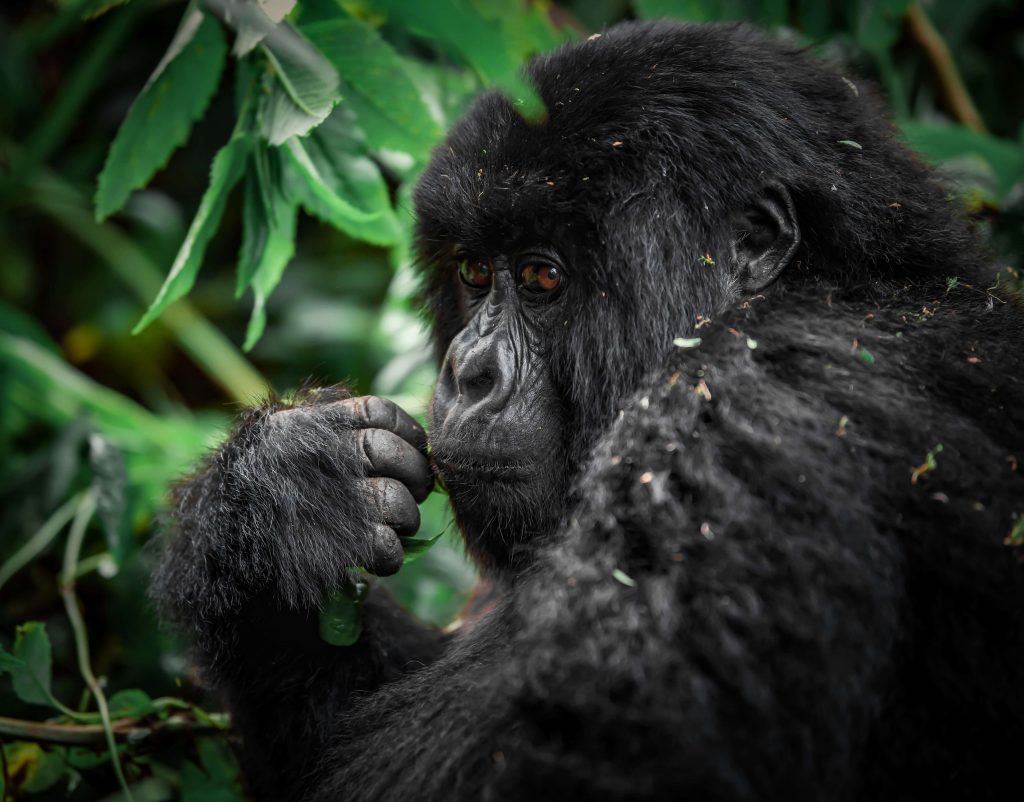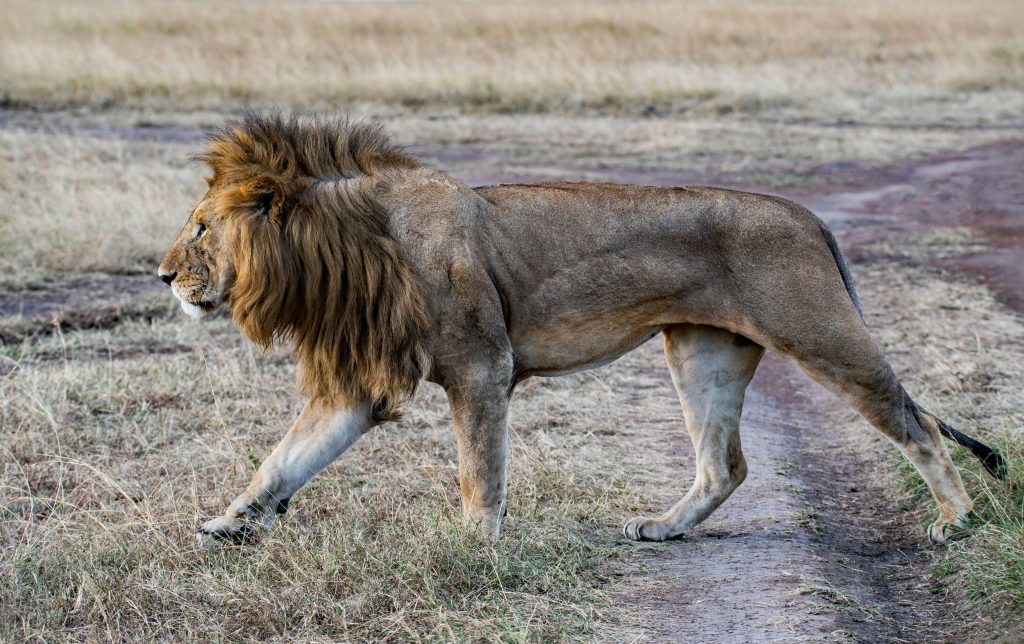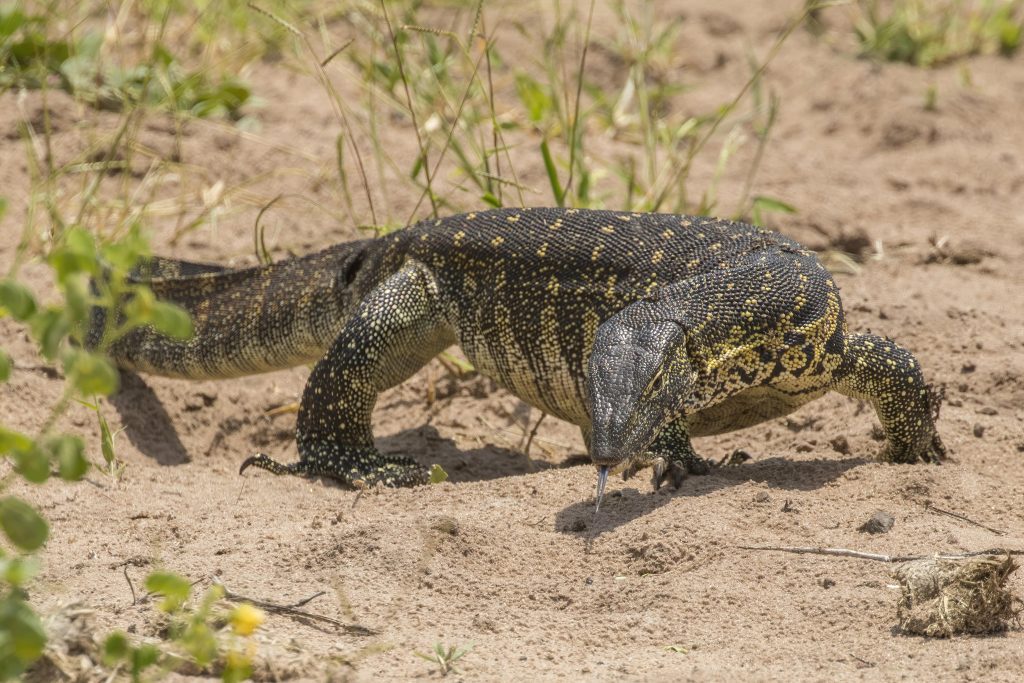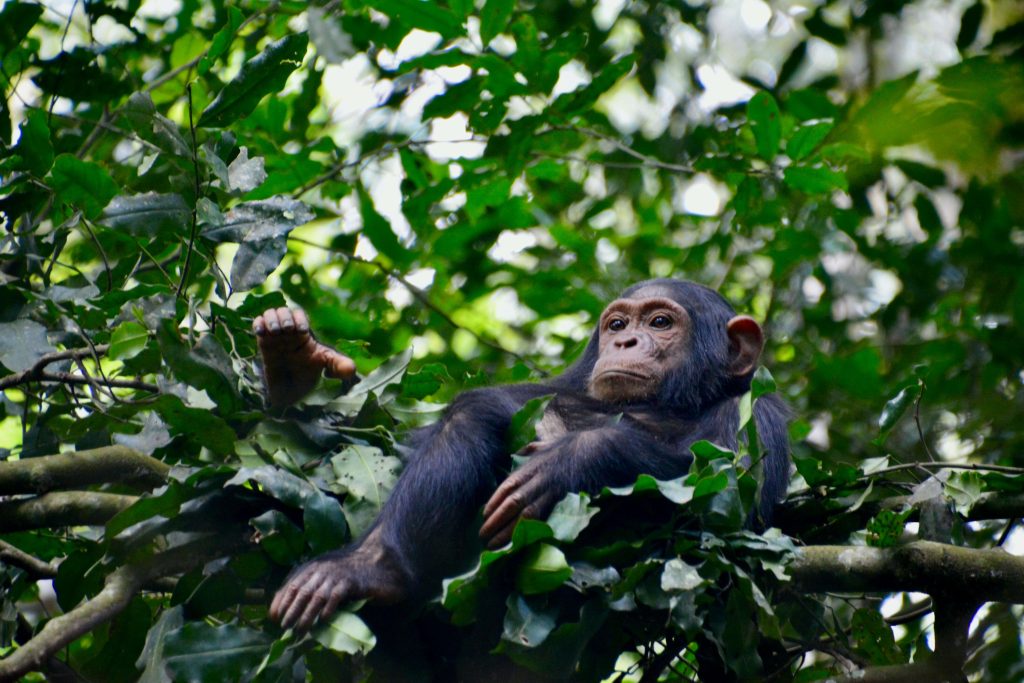Rwanda occupies a small patch of Central-East Africa, just 26,000 square kilometres, but within that space lies a wildlife profile far richer than its size suggests.
Few countries this compact host such biological variety; primates in misty highlands, savanna mammals along wetland fringes, and rare birds tucked deep in recovering forests.
Most people who think of Rwanda picture mountain gorillas. That image has become iconic, and for good reason. Yet the country’s ecological map is broader. There’s Akagera with its elephants and lions, Nyungwe with its chimpanzees, and isolated patches like Gishwati-Mukura beginning a slow comeback after decades of degradation.
Since the early 2000s, the government of Rwanda has actively restructured its protected areas and wildlife laws. National parks now cover over 10 per cent of the country. These aren’t loosely defined spaces either; they’re fenced, patrolled, zoned, and managed with long-term sustainability in mind.
Wildlife-based tourism plays a clear economic role too. Post-1994, Rwanda had to rebuild almost everything. It chose ecotourism as one of its pillars. Revenue from gorilla permits and park fees goes partly into conservation, partly into local infrastructure. In places like Kinigi and Nyamasheke, schools and roads now stand where there was once only subsistence farming.
This approach appeals to a particular kind of visitor—you, perhaps—someone looking not for mass tourism, but for meaning. Rwanda doesn’t offer cheap safari circuits. What it offers is quality access, carefully managed environments, and a sense that you’re stepping into something long-term.
There’s still work to do. Not every balance has been struck. But few countries on the continent have pursued wildlife conservation with such policy-level precision.
Ecosystems of Rwanda
Rwanda’s ecological zones shift sharply across altitude and rainfall gradients. Despite its small landmass, the country supports several bioregions, each defined by elevation, rainfall, and vegetation density.
The Albertine Rift: Rwanda’s Forest Spine
Western Rwanda lies within the Albertine Rift, a fault line that carves through the Great Lakes region. Elevations here range from 1,600 to over 4,500 metres. This rise supports one of the most intact montane forest systems in East Africa.
The Volcanoes region, with its chain of dormant volcanoes, holds high-altitude bamboo zones and Hagenia-Hypericum forests. These are prime habitats for mountain gorillas and golden monkeys. Further south, Nyungwe Forest and the smaller Gishwati–Mukura corridor provide habitat for chimpanzees, L’Hoest’s monkeys, and Albertine Rift endemics, such as the handsome francolin.
Most of this forest system stays humid year-round. Rainfall exceeds 2,000 mm in parts of Nyungwe, creating dense undergrowth and closed canopies. You’d need boots with a good grip if you plan to explore it on foot.
Eastern Savannah and Wetland Mosaics
As you move east, the elevation drops. So does the rainfall. Akagera National Park sits at roughly 1,200 metres above sea level. It combines wooded savannah, open plains, seasonal swamps, and a series of shallow lakes. These zones support mammals not found in the western parks: lions, giraffes, hippos, and zebras, among others.
Papyrus wetlands form long corridors along the Akagera River. Lakes like Ihema and Shakani attract both terrestrial wildlife and aquatic species. Shoebills, rarely seen elsewhere, breed in isolated patches of papyrus here.
This part of Rwanda operates on a different rhythm. Animals migrate seasonally within the park, following water and grazing cycles. Park authorities manage fire regimes and fence lines carefully to avoid conflict with nearby farms.
Central Highlands and Transition Zones
Between the Rift and the lowlands lies Rwanda’s central plateau. Much of this area is farmland now, but remnant woodlots and hilltop savannahs still host pockets of biodiversity.
Wetlands thread through these uplands as well. Rugezi Marsh, near the Burera-Ruhondo twin lakes, is one of Rwanda’s most important ecological sites. It stores water for downstream rivers and provides a nesting ground for endangered birds like the papyrus yellow warbler.
These transition zones are harder to categorise. They’re patchy, influenced by cultivation, erosion, and reforestation programs. But they matter. Many species—especially birds and amphibians—depend on these marginal areas for part of their life cycle.
Key Wildlife Species in Rwanda
Rwanda supports a distinct mix of forest primates, savanna mammals, endemic birds, and aquatic species. Each national park anchors a unique subset of this broader inventory.
a) Primates
The mountain gorilla (Gorilla beringei beringei) lives only in the high-altitude forests of the Virunga massif. In Rwanda, they occupy the slopes of Volcanoes National Park. As of the 2021 census, approximately 604 individuals inhabit this shared transboundary range.
Groups are led by dominant silverbacks, and gorilla tracking is strictly regulated through the Rwanda Development Board. Only 96 visitors are permitted per day.
Golden monkeys (Cercopithecus kandti), another highland specialist, live in bamboo forests at the base of Mount Sabyinyo and Mount Mgahinga. Their social behaviour is more active than gorillas ‘ expect movement. They feed largely on shoots and invertebrates.
In Nyungwe and Gishwati–Mukura, chimpanzees (Pan troglodytes schweinfurthii) occupy steep, mature forest. Their range is fragmented, so sightings may require multiple treks. Besides chimps, these forests host black-and-white colobus monkeys, Dent’s mona monkeys, and L’Hoest’s monkeys.

On top of that, nocturnal primates such as bush babies and pottos appear on guided night walks. Most are identified by call rather than sight.
b) Savanna Mammals
Akagera National Park provides the country’s primary savanna experience. It now supports the full Big Five: lion, elephant, leopard, buffalo, and black rhinoceros. Lions were reintroduced in 2015. Rhinos followed in 2017, with a white rhino translocation completed in 2021.

In addition to predators, the park contains herds of eland, topi, impala, and Defassa waterbuck. Giraffes are often seen near Lake Ihema. Warthogs, bush pigs, and reedbuck use edge zones near thickets.
Hippos concentrate in lake systems and are especially visible during early morning drives. Nile crocodiles patrol shoreline areas and bask on sandbanks. You’ll want binoculars here—they often hold still for hours.
c) Birdlife
Rwanda records over 700 bird species, including 29 Albertine Rift endemics. Nyungwe is the country’s richest birding site. Notable species include the Grauer’s swamp warbler, Rwenzori batis, and the handsome francolin.
In Akagera, waterbirds dominate. These include saddle-billed storks, African fish eagles, African jacanas, and the elusive shoebill. Papyrus swamp zones near Lake Rwanyakizinga are key for rare sightings.
Gishwati and Mukura forests host a smaller, recovering bird population. It’s still worth visiting for species like the dusky crimsonwing and stripe-breasted tit.
d) Reptiles, Amphibians, and Insects
Reptiles are most visible in lowland areas. Nile monitors, snakes, and chameleons inhabit Akagera’s dry sections. Amphibians dominate Rwanda’s high-rainfall regions. Tree frogs thrive in Nyungwe’s river systems.

Butterfly research continues to expand in Rwanda. Over 120 species are confirmed in Nyungwe alone. This number will likely grow—taxonomy is ongoing and underfunded.
Where to See Wildlife
Rwanda’s wildlife experiences are structured around four primary protected areas. Each park operates under the Rwanda Development Board and enforces strict access guidelines, with bookings required.
I. Volcanoes National Park
Located in the northwestern district of Musanze, this 160-square-kilometre park holds most of Rwanda’s gorilla tourism. It protects the Rwandan side of the Virunga massif, which includes five dormant volcanoes—Sabyinyo, Gahinga, Muhabura, Karisimbi, and Bisoke.
Permits for gorilla trekking are capped at 96 per day. Treks begin at Kinigi Headquarters and are led by certified guides. Besides gorillas, visitors may see golden monkeys, bushbuck, or even side-striped jackals in open clearings.
Cultural tourism in the surrounding areas complements wildlife viewing. The Iby’Iwacu cultural centre and several community-run homestays operate under formal tourism agreements.
II. Nyungwe National Park
Nyungwe Forest spans over 1,000 square kilometres in Rwanda’s southwest. This montane rainforest sits between 1,600 and 2,950 meters above sea level. It contains one of the oldest remaining forest blocks in Africa.
The park holds chimpanzees, colobus monkeys, owl-faced monkeys, and over 300 bird species, including Albertine Rift endemics. Guided canopy walks offer access to upper forest levels. The Uwinka Reception Centre serves as the main visitor hub.

Besides primates, Nyungwe is vital for hydrology. It feeds into both the Congo and Nile drainage basins. Hikers can trace the source of the Nile at one trailhead near Gisakura.
III. Gishwati–Mukura National Park
Gazetted in 2015, Gishwati–Mukura consists of two forest fragments totalling 34 square kilometres. Though smaller than other parks, it plays an outsized role in biodiversity restoration.
The park contains eastern chimpanzees, golden monkeys, blue monkeys, and birdlife adapted to high-altitude forest. Its slopes were heavily deforested during population resettlement after the genocide. Today, reforestation projects, corridor linking, and agroforestry programs operate alongside tourism.
Visitor access is more limited here. Most tours are arranged through partner lodges or local NGOs. Park infrastructure remains minimal, but its conservation role continues to expand.
IV. Akagera National Park
Akagera lies in eastern Rwanda along the border with Tanzania. It spans 1,122 square kilometres and includes lakes, wetlands, acacia woodlands, and savannah.
It is the country’s only Big Five destination. Lions were reintroduced in 2015, and black rhinos in 2017. The park also holds giraffes, zebras, leopards, elephants, and over 480 bird species. Lake Ihema supports large hippo populations and is used for guided boat safaris.
Akagera is co-managed by RDB and African Parks under a 20-year agreement signed in 2010. Security, road upgrades, and wildlife tracking have all been scaled up since that time.
Permits are issued at the southern entrance. A limited number of private camps operate inside the park, offering both self-drive and guided options. Day visitors must exit by 6:00 PM.
You’ll want to plan each park visit based on ecological focus and travel time. Rwanda’s compact size helps—Volcanoes to Akagera, for example, is a five-hour drive.
Ethical Wildlife Tourism in Rwanda
Wildlife tourism in Rwanda follows a permit-based system, tightly regulated to protect species and reduce ecological strain. Park access is controlled by the Rwanda Development Board (RDB), which sets group size limits, activity zones, and viewing durations.
Gorilla trekking permits cost USD 1,500 per person. Each group consists of no more than eight people, assigned to a specific gorilla family. Briefings begin at 7:00 AM, followed by guided entry through designated forest trails.
Trekking rules prohibit direct contact, flash photography, and close-range standing. Minimum viewing distance is seven meters. Visits last a strict one hour, monitored by field rangers.
Chimpanzee tracking in Nyungwe and Gishwati follows a similar protocol, though permits are less expensive. These primates move faster and range wider, so sightings require early starts and clear weather.
In addition to viewing rules, ethical tourism in Rwanda is anchored in benefit sharing. RDB allocates 10 per cent of park revenues to community development. This includes schools, clinics, roads, and small-business support near park boundaries.
Visitors often ask how tourism affects animals in Rwanda. Good question. Wildlife habituation is a managed process. Rangers spend months gradually exposing gorillas and chimps to humans before trekking begins. Each group is monitored for stress signs.
Besides primates, Akagera’s wildlife is protected through strict vehicle routing and speed limits. Off-road driving is banned. Most game-viewing occurs along defined loops with radio contact for ranger support.
On top of that, several lodges and community camps operate under ecotourism codes. These include greywater systems, solar power, and locally staffed operations. Lodges in Nyungwe and Volcanoes are now required to undergo environmental impact audits before licensing.
If you’re planning a visit, consider how your itinerary supports both species and local livelihoods. Ethical wildlife tourism in Rwanda has become part of the national character.
Challenges Facing Wildlife in Rwanda
- Habitat Pressure from Agriculture
Rwanda’s high population density (over 500 people per sq km) leads to land clearance near park borders, especially in Nyamasheke, Gatsibo, and Rubavu districts. - Forest Fragmentation
Gishwati–Mukura’s forest blocks remain disconnected. Isolated wildlife populations struggle to recover due to broken migration and genetic bottlenecks. - Human-Wildlife Conflict
Crops near Akagera and Volcanoes parks are frequently damaged by buffalo, baboons, and elephants. Compensation systems exist, but delays remain a local concern. - Climate Instability
Altered rainfall patterns have increased flood and landslide risk in Nyungwe and Volcanoes. These disrupt primate movement and trail accessibility. - Poaching and Subsistence Hunting
Though large-scale poaching is rare, small-scale snaring persists, especially around Mukura and eastern Akagera. It threatens duikers, birds, and even primates. - Invasive Species Spread
Akagera’s lakes face ecological imbalance from water hyacinth. This plant reduces oxygen, disrupts breeding zones, and complicates boat-based tourism. - Tourism Dependency Risks
Conservation funding relies heavily on park visitation. COVID-19 showed how vulnerable this model becomes when international tourism halts unexpectedly. - Limited Research Infrastructure
Some areas, especially Mukura, lack long-term ecological monitoring. Data gaps weaken adaptive conservation and slow down effective wildlife planning in Rwanda. - Pressure on Corridor Zones
Gorilla dispersal zones outside Volcanoes Park have shrunk. Some groups range beyond formal park boundaries, raising conflict and regulatory questions.
Conclusion
Wildlife in Rwanda is managed, not left to chance. Parks are surveyed. Permits are enforced. Communities have a legal stake in the resources they live beside.
From gorilla trekking to savanna conservation, Rwanda’s wildlife sector is shaped by policy choices. These choices reflect a broader national ethic—one that connects ecological preservation to long-term development.
If you are assessing Rwanda as a destination, as an investment frontier, or as a conservation case study, the work on the ground is real. It’s measurable. It continues to evolve.
Much remains unfinished. Corridor zones still close in. Enforcement gaps appear. But few countries administer their protected areas with this degree of coherence.
In wildlife terms, Rwanda is small but systematised. It rewards the visitor who pays attention, the operator who plans responsibly, and the agency that looks beyond the obvious species.
🦍 For carefully planned safaris and conservation-focused itineraries, reach out to Inmersion Africa Journeys or enquire directly at inmersionafrica.com/enquiry
